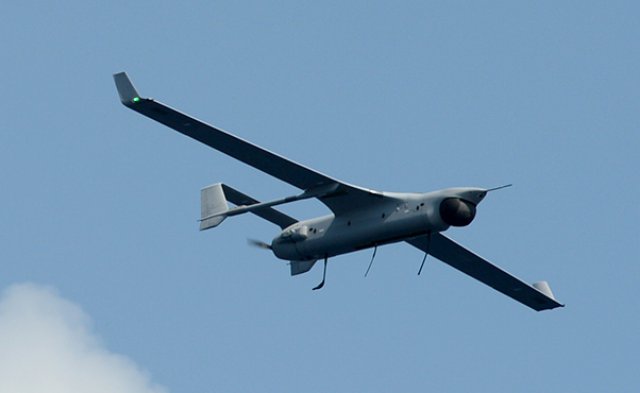 The US Marine Corps envisions the rapid fielding of unmanned systems as a vital component in its drive to revitalize maneuver warfare to counter the development of advanced defensive weapons by potential adversaries, Lt. Gen. Robert Walsh, the deputy commandant for combat development and integration, said Oct. 25.
The US Marine Corps envisions the rapid fielding of unmanned systems as a vital component in its drive to revitalize maneuver warfare to counter the development of advanced defensive weapons by potential adversaries, Lt. Gen. Robert Walsh, the deputy commandant for combat development and integration, said Oct. 25.
It also sees the advantage of using large numbers of inexpensive unmanned systems to generate “mass” in place of employing a few high-cost platforms that can be easily targeted, Walsh said.
In a presentation at the Defense Unmanned Systems conference hosted by the Association of Unmanned Vehicle Systems International, Walsh said the Corps would be testing a lot of aerial and ground unmanned systems as part of its aggressive Sea Dragon experimental program to develop concepts and weapons to support its recently released Marine Corps Operating Concept.
That experimental drive will include giving every squad in four infantry battalions a small unmanned aerial vehicle (UAV) to test as a reconnaissance aid, fielding prototype robotic ground vehicles to help lighten the load of foot-mobile Marines and forming a team to explore ways that unmanned systems could revolutionize expeditionary ship-to-shore operations, Walsh said.
Instead of Marines being in the first wave of an amphibious landing, there could be unmanned, autonomous systems leading the way to sense where the enemy is or to deceive the adversary, he suggested.
Walsh said the accelerated push to rapidly field prototypes of unmanned systems to be tested by operating forces was driven by the fact that while the Marines have been tied up in 15 years of counter-insurgency operations in Iraq and Afghanistan, potential adversaries have been developing high-end weapon systems to counter the U.S. military’s demonstrated capabilities.
“We’ll fall behind if we don’t move out,” he said.
In a sharp departure from the past U.S. practice of deploying a relatively few “exquisite” manned weapon systems, Walsh said they could use “more mass, more numbers, because unmanned systems are less expensive.”
That proposal appeared to draw from the concept of “swarming” large numbers of small robotic systems to overwhelm an adversary’s defensive capabilities that was described later in the day by Rear Adm. Mathias Winter, head of the Office of Naval Research.
The new operating concept emphasizes the use of maneuver warfare, which advocates rapid movement of smaller units around enemy strong points, and Walsh said “we see that unmanned systems enable maneuver in unexpected ways.”
The experimental effort also would look for “systems that can replace Marines with unmanned or autonomous systems,” particularly in the “dirty, dull and dangerous” missions, he said.
Walsh, a former fighter pilot, also envisioned the new F-35 fighter with its expansive, high-tech sensing and communications capabilities “being the quarterback for unmanned systems.”
Among the other uses of unmanned systems to support Marine ground units, Walsh proposed robotic vehicles that could lighten the load of the foot-mobile force by carrying supplies, allowing infantry Marines to send a UAV to locate the enemy while they stay safe behind cover and giving the light armored scout platoons UAVs to find the enemy force rather than risk running into a dangerous defensive position.
The Marines recently deployed the first of their new RQ-21A Black Jacks, a group 3 UAV, Walsh said they are looking to industry to offer a larger group 5 unmanned aircraft with the size, range and payload of the Air Force’s Predators. But to meet the need of the naval force, it would have to be a vertical takeoff system that could operate from amphibious ships or rugged expeditionary land bases, he said.
Walsh said the Marine plan to issue a new part of their unmanned systems road map every quarter, with the next one due in December focusing on logistics.
Source: Seapower
